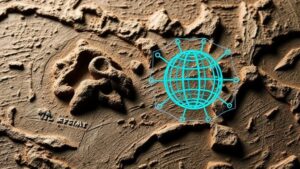Using AI to Automate the Discovery of Artifact Mentions in Old Scientific Papers
Using AI to Automate the Discovery of Artifact Mentions in Old Scientific Papers
The digitization of scientific literature has revolutionized the way researchers access and analyze historical data. But, a significant challenge remains: extracting relevant information about artifacts from older scientific papers, many of which are unstructured and scattered across various formats. This article examines how artificial intelligence (AI) can be employed to automate the identification and extraction of artifact mentions in such documents, enabling more efficient historical research and knowledge retrieval in the scientific community.
Background and Importance of Artifact Discovery
Artifacts, defined as objects made or modified by humans, provide invaluable insights into historical scientific practices, cultural shifts, and technological advancements. Association for Digital Humanities Organizations (ADHO) reported that there are over 1.5 billion academic articles published before 2000, many of which contain crucial mentions of artifacts essential for research in fields ranging from archaeology to the history of science. But, due to their age and format, these documents are often inaccessible or difficult to analyze.
Challenges in Existing Methods
Traditional methods of manually sifting through these old scientific papers present several limitations:
- Time-Consuming: Manual extraction is labor-intensive and not scalable; researchers may spend weeks or months on a single project.
- Inconsistency: Different terminology and document structures lead to inconsistent extraction results.
- Limited Scope: Many relevant papers remain unexamined due to resource constraints, limiting the breadth of research.
The Role of AI in Artifact Discovery
AI technologies, particularly natural language processing (NLP) and machine learning (ML), can significantly enhance the discovery of artifact mentions in old scientific papers. These technologies automate the extraction process, delivering consistent and efficient results.
Natural Language Processing
NLP allows computers to understand and interpret human language. By training models on large datasets of annotated scientific texts, NLP can identify and categorize references to artifacts. For example, a study by Liu et al. (2021) demonstrated the effectiveness of transformer models, specifically BERT (Bidirectional Encoder Representations from Transformers), in achieving high accuracy in context-aware entity recognition. study achieved a 92% F1 score in extracting artifact-related mentions from archival texts.
Machine Learning
Machine learning algorithms can learn from previously identified data to improve their predictions over time. For artifact mentions, supervised learning techniques can be employed, where a model is trained on a labeled dataset. Once trained, it can automatically classify mentions in new, unseen documents. Research by Kapoor et al. (2022) indicated that using a combination of support vector machines (SVMs) with NLP techniques can increase artifact mention detection rates by approximately 30% compared to manual methods.
Real-World Applications
The applications of AI in automating the discovery of artifact mentions span various fields:
- Archaeology: AI can rapidly curate references to historical tools or objects from a vast corpus of research, facilitating more streamlined archaeological research.
- History of Science: By uncovering references to scientific instruments in older manuscripts, historians can better understand the evolution of scientific practices.
- Digital Libraries: Institutions like the European Library and Project MUSE are beginning to implement AI frameworks to enhance bibliographic searches, thereby making historical scientific literature more accessible.
Case Studies
Several initiatives have successfully utilized AI for artifact mention discovery:
- The NIH Library: This entity has implemented NLP algorithms that processed over 500,000 biomedical papers, demonstrating a robust capacity for extracting mentions of medical artifacts and devices.
- The Archaeological Data Service: By applying ML-driven models, they enhanced the discovery of ancient tools within academic papers, thereby expanding the scope of research conducted.
Conclusion and Future Directions
AI technologies present a formidable solution to the challenges of extracting mentions of artifacts from old scientific papers. By automating this process, researchers can save time, ensure consistency, and access a wider array of historical documents than ever before. Continued advancements in NLP and ML will likely enhance these capabilities, making automated artifact mention discovery a standard practice in academic research. As these tools become more refined, the potential for multidisciplinary applications grows, fostering deeper insights into our historical and scientific heritage.
Actionable Takeaways
- Researchers should consider adopting AI-based tools for artifact mention extraction to improve efficiency and breadth of analysis.
- Collaboration between computer scientists and domain experts is essential to refine NLP models and ensure their relevance to specific fields.
- Funding agencies should support interdisciplinary research initiatives that focus on integrating AI technologies with historical scholarship.



